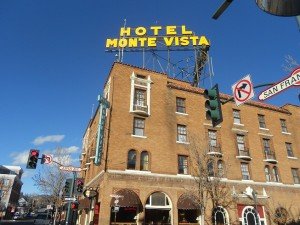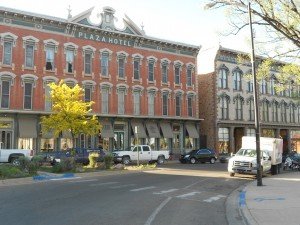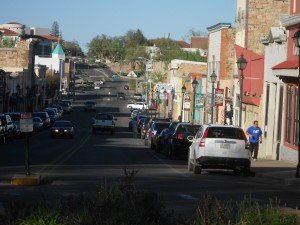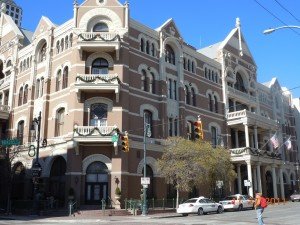All throughout the United States there are historic hotels, many of which were constructed during the 1800’s and early 1900’s that are still in operation today and most have quite interesting backgrounds. The subject of ghosts in hotels are connected with many of these sites.

You no doubt have heard some of these stories on television that employ ghost cams and ghosts in hotels is certainly not something new. While you can argue that some of these stories may be a bit over hyped, the fact is that the hotel ghost has been around for decades upon decades. Their sightings have come from many notable people who have no real need for publicity.
In this article we wanted to highlight just a few of these old and still operating hotels which you just want to visit or stay a night or two at during your travels. Most of these ghost hotels have been restored over the years and display their original splendor.
Hotel Monte Vista / Flagstaff Arizona
The Hotel Monte Vista in Flagstaff Arizona is a hotel with several stories. At one time this hotel served many in the motion picture industry since the geography around the town lent itself quite well for the production of western movies.

The phantom bellboy is just one of these stories. A knock on a hotel door announcing room service would be met with an empty hallway with nobody in sight. Among the guests reporting these happenings was no less than a man named John Wayne staying at the Hotel Monte Vista while working on a film. Some, including John Wayne, reported a bellboy standing outside room 210 who seemingly disappeared.
Another good ghost story relating to the Hotel Monte Vista is the sighting of a woman sitting in a rocking chair at the window of room 305. Guests and hotel staff have also reported the rocking chair moving by itself. This story connects itself with the fact that the room at one time had a long term elderly woman renter who would sit by the window of room 305 for hours on end.

One more story concerning the Hotel Monte Vista, and there are several more, concerns a 1970 bank robbery. It seems the bank robbers stopped by the hotel’s bar to have a drink even though one of the robbers was shot by the bank guard. Reportedly the wounded man had one last drink at the bar before bleeding to death from his wounds. Both bar guests and staff have since that time have witnessed bar stools and drinks moving on their own as well as being greeted with the phrase “good morning” by an anonymous voice.
The Hotel Monte Vista, constructed in 1926 and opened in January 1927, is located in the Old Town district of Flagstaff. One of the original investors was none other than the author Zane Grey. If your travel plans happen to take you through northern Arizona, this is one stop you want to add to your Arizona trip planner. The Hotel Monte Vista is located at 100 N. San Francisco Street in downtown Flagstaff.

The Plaza Hotel / Las Vegas New Mexico
Hotel ghosts are nothing new for the state of New Mexico. Las Vegas’ Plaza Hotel is just one of those. The Plaza Hotel in the center of historic Las Vegas New Mexico was built in 1852. This would ave been about six years after the U.S. took over the region from Mexico during the Mexican American War. Thirty-six years later, a prominent town resident by the name of Byron T. Mills, took over ownership.
The Plaza Hotel ghost story begins in the year 1945 when Mills, who still owned the hotel, decided to demolish the old structure. For a reason nobody knows, Mills changed his mind and cancelled demolition. Speculation was that Mills started to consider the hotel’s long and rich history and simply decided to let it stand.
The paranormal activity reported at the Plaza Hotel involves guests and staff reportedly seeing an apparition of Byron T. Mills who passed away in 1947. This included experiencing doors suddenly locking, the distinct smell of perfume and doors opening by themselves followed by the sound of footsteps with nobody in sight.

Ghost sighting investigators have examined the Plaza Hotel. Results included abnormal electrical activity that would appear and then disappear several times. The investigators did indeed smell the aroma of perfume in several locations as well as the sudden strong smell of a cigar with absolutely no explanation. In fact, patrons many times have smelled cigar smoke in the bar with no explanation whatsoever.
If your travels take you to New Mexico, I would surely recommend a stop in historic Las Vegas and a stop at the excellently restored Plaza Hotel. The hotel is located on the north side of the Las Vegas New Mexico plaza.
Links to two additional articles on Trips Into History which you’ll find interesting are the Historic Hotels of America and the story of the Psychic Mediums of Lily Dale New York.

The Driskill Hotel / Austin Texas
The Driskill Hotel in Austin Texas was built in 1886. At one time it even served for legislative meetings prior to the Texas state capital building being erected. There’s a lot of rich history concerning the Driskill which was built by cattle baron Jesse Driskill. Today, the Driskill Hotel is owned by Hyatt Hotels but is still named the Driskill Hotel. The hotel remains one of the premier hotels in Texas.
The Driskill Hotel is known to be the most haunted hotel in Texas. One of the several ghosts in hotels stories concerning the Driskill is that of Jesse Driskill himself wandering through the original part of the hotel. His presence is felt by the strong smell of cigar smoke ans well as an interest in bathroom lights.

Another interesting story is about a young girl and a bouncing ball. During a legislative session in the hotel’s early years, a legislator’s young daughter reportedly fell to here death from the hotel’s staircase while chasing a ball. The young girl’s death was the first at the new hotel and a short time after the tragic event the sounds of the girl playing on the staircase could clearly be heard.
The next Driskill ghost story concerns a man named P.J. Lawless. Lawless was a ticket agent for the International Great Northern Railroad and ended up residing at the Driskill Hotel for some thirty-one years. Hotel guests have reported seeing such a man appear. The thing that stands out to guests is a man in the crowd dressed in an early 20th century ticket taker’s uniform and who is known to check his railroad watch as though still tracking trains that don’t exist today.
The historic and haunted Driskill Hotel is located in downtown Austin Texas at 604 Brazos Street.
(Photos and images from author’s private collection)
